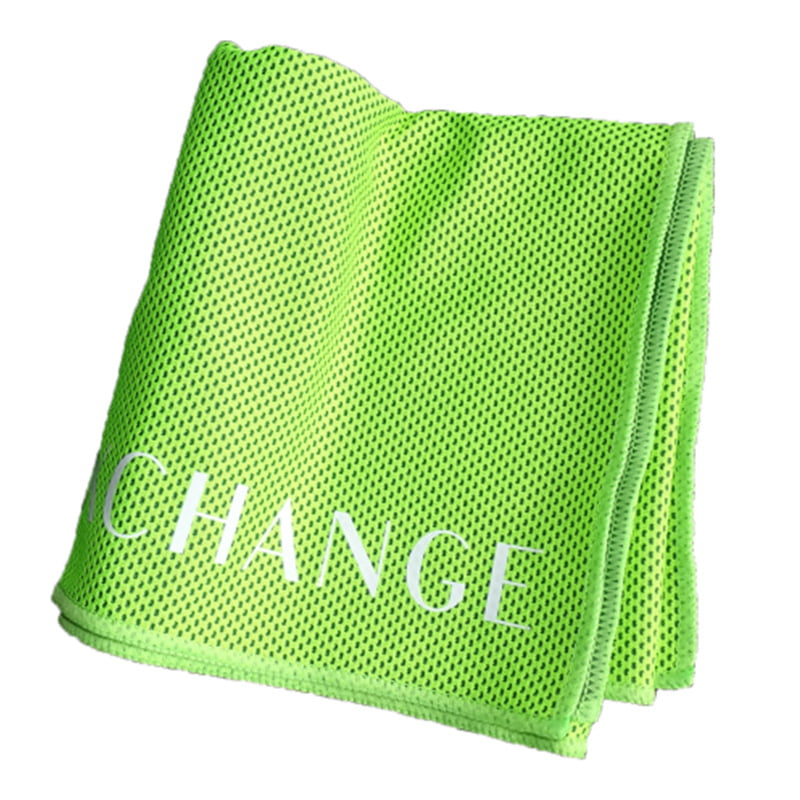If you are interested in some of our products, please feel free to visit our website or contact us for detailed information.
The evaporation rate of moisture from sport towel fabrics is influenced by several factors, including the material composition, fabric structure, thickness, and surface treatments. Here's a detailed look at how different sport towel fabrics perform in terms of moisture evaporation:
Material Composition
Cotton: Cotton is highly absorbent but tends to retain moisture longer than synthetic materials. Its natural fibers hold water well, but the evaporation rate can be slower because the moisture is trapped within the fibers.
Microfiber: Microfiber towels, made from synthetic fibers like polyester and polyamide, have a high surface area due to their fine fibers, which allows for faster evaporation. They wick moisture away from the skin quickly and spread it out over a larger area, speeding up the drying process.
Bamboo: Bamboo towels are known for their absorbency and natural antimicrobial properties. They can absorb moisture well, but their evaporation rate can vary depending on the specific blend and weave.
Blends: Towels made from a blend of materials, such as cotton-polyester blends, can offer a balance between absorbency and evaporation. The synthetic component typically helps improve the drying rate compared to pure cotton.
Fabric Structure
Weave/Knit Type: The structure of the fabric, whether it is tightly woven or loosely knit, affects how quickly moisture can evaporate. Loosely knit or woven fabrics allow for more airflow, enhancing evaporation.
Pile Height: Towels with a high pile (thicker, fluffier surface) can trap more moisture but might take longer to dry compared to those with a low pile.
Surface Area: Fabrics with a larger surface area (e.g., microfiber) provide more exposure to air, which can increase the rate of evaporation.
Thickness
Thin Towels: Thinner towels tend to dry faster because there is less material for the moisture to penetrate and more surface area relative to the volume of the towel.
Thick Towels: While thicker towels can absorb more moisture, they can also take longer to dry because the water has to travel through more material to evaporate.

Surface Treatments
Hydrophobic Coatings: Some sport towels are treated with hydrophobic (water-repellent) coatings that help water bead up and roll off, which can reduce the overall moisture absorption but speed up drying.
Antimicrobial Treatments: Antimicrobial treatments can help reduce bacteria growth, which might not directly affect evaporation but can help keep the towel fresher during the drying process.
Comparative Evaporation Rates
Cotton Towels: High absorbency, slower evaporation due to moisture retention within fibers.
Microfiber Towels: High absorbency, fast evaporation due to fine fibers and large surface area.
Bamboo Towels: High absorbency, variable evaporation depending on blend and weave.
Blended Towels: Moderate to high absorbency, variable evaporation rates influenced by the proportion of synthetic fibers.
Practical Considerations
Environmental Factors: The surrounding environment, including humidity, temperature, and airflow, significantly affects the evaporation rate. Higher temperatures and better airflow promote faster drying.
Usage Scenario: How the towel is used (e.g., for wiping sweat versus drying off after swimming) can impact how saturated it gets and, consequently, how quickly it dries.
Microfiber towels generally offer the fastest evaporation rates due to their fine fibers and large surface area, which enhance moisture wicking and drying. Cotton towels, while highly absorbent, tend to dry more slowly because they retain moisture within their fibers. Bamboo and blended materials fall somewhere in between, with their performance depending on specific fabric compositions and structures.








